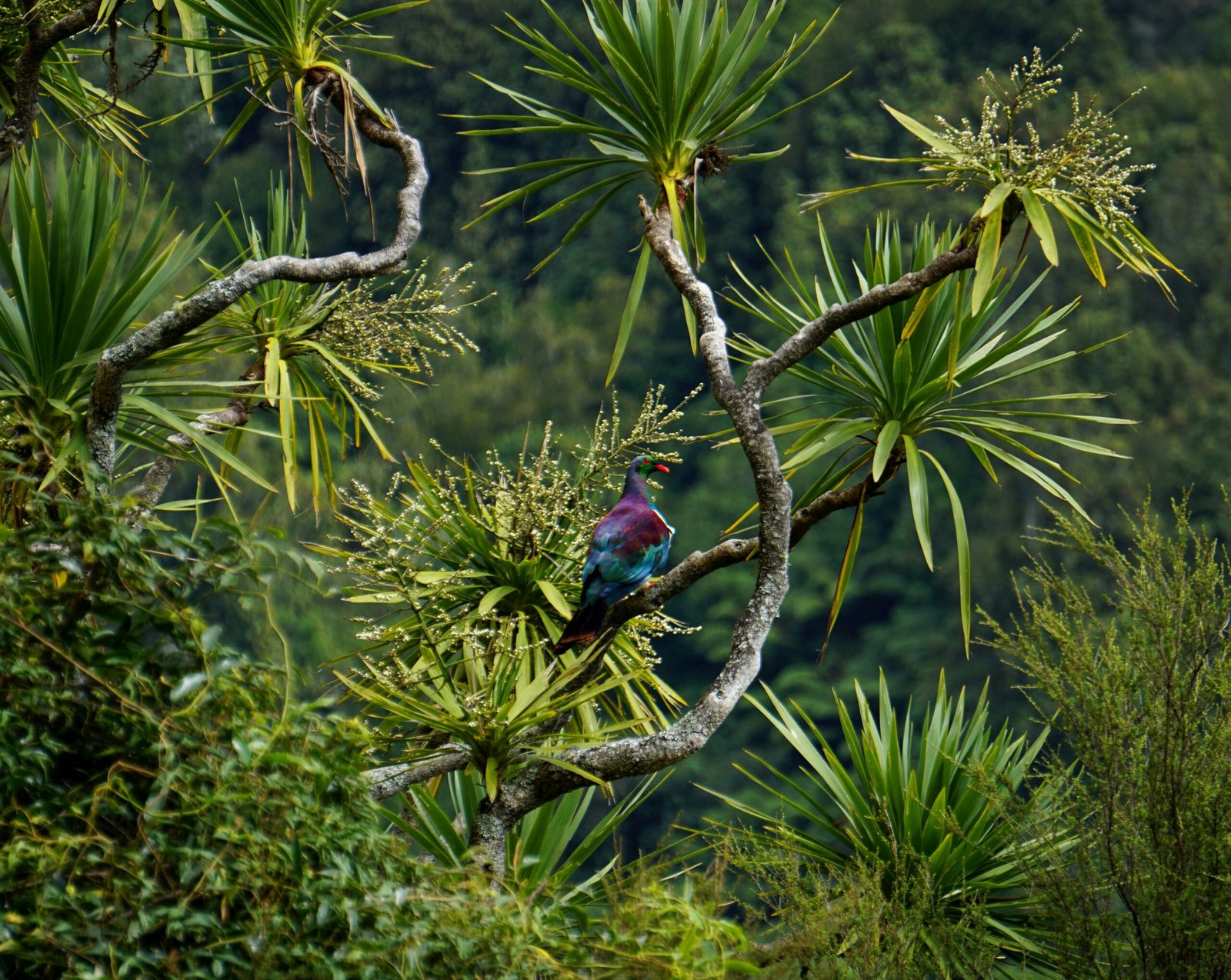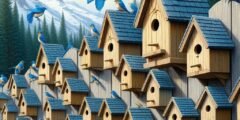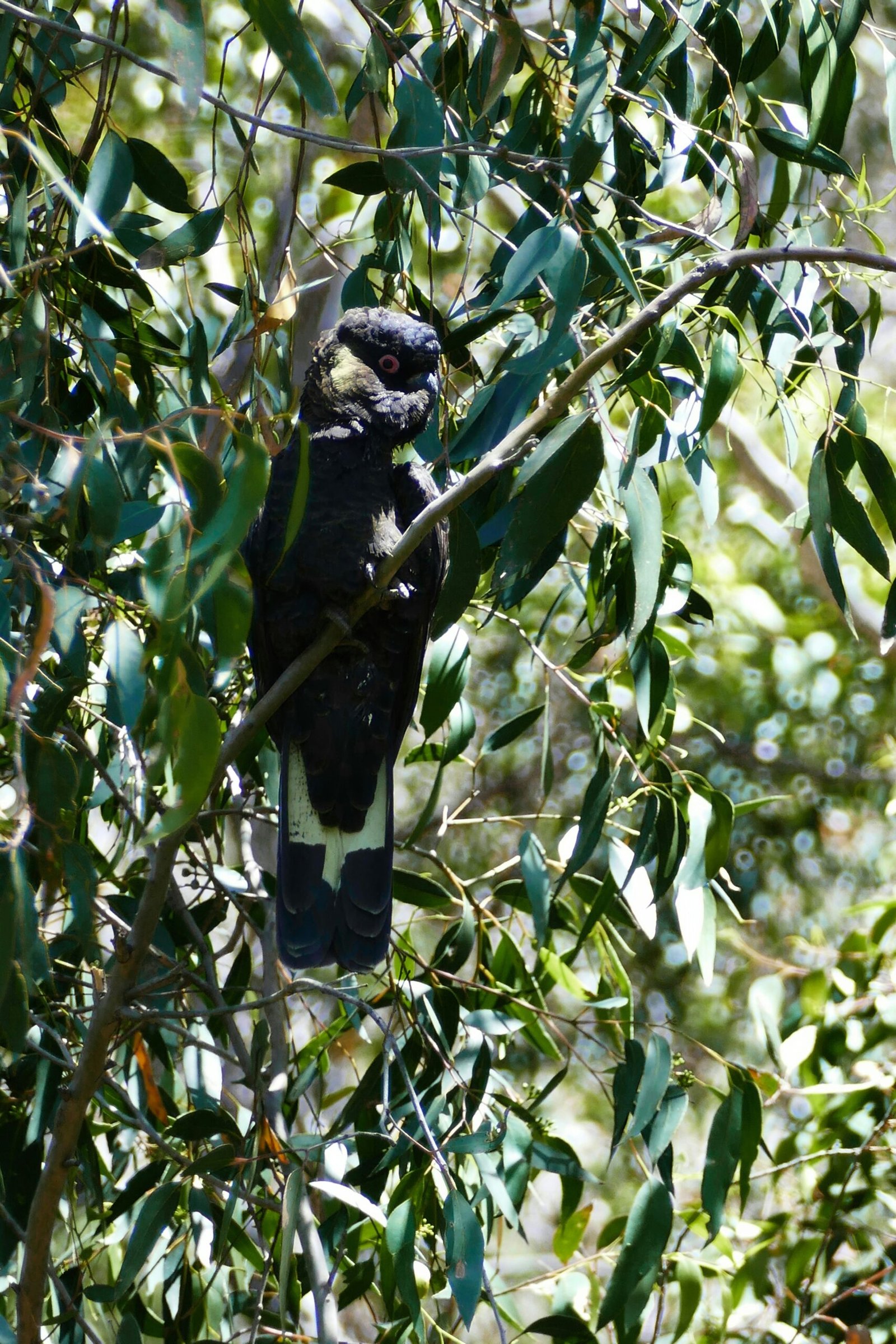The proper mounting of a bluebird house is crucial for the safety and wellbeing of its inhabitants. Bluebirds are known to be particular about their nesting sites, and their survival often depends on the suitability of these locations. Ensuring that a bluebird house is mounted correctly can significantly influence their nesting success and overall population health.
One of the primary recommendations for mounting a bluebird house is to place it in an open area, ideally five to six feet off the ground. This height allows bluebirds to easily access the house while providing a vantage point to spot potential predators. Mounting the house on a pole or a 4×4 post is highly advisable, as this setup can be equipped with baffles to deter predators such as raccoons and snakes.
Conversely, mounting a bluebird house on trees or fence posts can pose significant risks. Trees and fence posts provide easy access for predators, which can lead to the loss of eggs or chicks. Additionally, such locations may expose the nest to harsh weather conditions, further endangering the bluebirds.
This blog post will guide you through the best methods for mounting a bluebird house in your yard. We will cover essential topics including the selection of the mounting location, the types of materials and tools needed, and step-by-step installation instructions. By following these guidelines, you can create a safe and inviting environment for bluebirds, contributing to their conservation and enjoying their presence in your yard.
Is Mounting a Bluebird House on a Tree Trunk Safe for the Tree?
Mounting a bluebird house on a tree trunk might seem like a natural choice, but it is important to consider the potential harm this method can cause to the tree. The primary concern lies in the use of nails and screws, which are commonly employed to secure birdhouses. These fasteners can penetrate the tree’s bark, creating entry points for diseases and pests.
The bark of a tree serves as its protective layer, akin to human skin. When this barrier is compromised, it leaves the tree vulnerable to various pathogens and insects. According to arborists, even small punctures can lead to significant damage over time. For instance, the introduction of nails or screws can disrupt the flow of nutrients and water within the tree, leading to localized decay or even larger-scale health issues.
Several scientific studies have highlighted the adverse effects of such injuries. Research conducted by the International Society of Arboriculture (ISA) has shown that repeated damage to the bark can reduce a tree’s overall vitality and lifespan. Furthermore, the invasion of pests like bark beetles, which are attracted to damaged areas, can exacerbate the problem, leading to further degradation of the tree’s health.
Ornithologists also weigh in on this matter, suggesting alternative mounting methods that are less invasive. For instance, using straps or brackets that do not penetrate the bark can be a safer option for both the tree and the birds. These methods ensure that the structural integrity of the tree remains intact, while still providing a secure habitat for bluebirds.
For more detailed information on tree health and maintenance, reputable sources such as the Arbor Day Foundation and the ISA offer comprehensive guides and resources. By consulting these experts, homeowners can make informed decisions that benefit both their trees and local wildlife.
In conclusion, while mounting a bluebird house on a tree trunk may seem convenient, the potential harm to the tree’s health cannot be overlooked. Opting for non-invasive methods will ensure the preservation of the tree’s vitality while still supporting bluebird populations.
What Are the Advantages of Using a Metal Pole Instead of a Tree for Mounting a Bluebird House?
When considering the optimal method for mounting a bluebird house, using a metal pole offers several significant advantages over mounting on a tree. One of the primary benefits is the enhanced stability and durability that metal poles provide. Unlike trees, which can sway with the wind or deteriorate over time, metal poles offer a steadfast structure that ensures the bluebird house remains securely in place.
Moreover, metal poles offer superior protection against common predators such as raccoons and snakes. These predators often find it challenging to climb smooth metal surfaces, thereby reducing the risk of predation on the bluebirds and their young. This added layer of security is crucial for fostering a safe breeding environment for bluebirds.
Installation and maintenance are also markedly easier when using metal poles. Metal poles can be driven into the ground with relative ease, and many come with built-in mechanisms or accessories designed specifically for mounting birdhouses. This contrasts with mounting on trees, which may require additional hardware, adjustments, and considerations for the tree’s health. Furthermore, metal poles are less susceptible to damage from weather or pests, ensuring long-term usability.
For those interested in a step-by-step guide on how to install a bluebird house on a metal pole, several resources are available online. These guides typically outline the necessary materials, tools, and procedures to ensure a successful installation. For detailed instructions, you can refer to Sialis.org or North American Bluebird Society.
In summary, the use of a metal pole for mounting a bluebird house presents numerous benefits, including enhanced stability, predator protection, and ease of installation and maintenance. These factors collectively contribute to creating a safer and more reliable habitat for bluebirds.
Can a Bluebird House Be Mounted on a Fence Post, and If So, What Type of Fence Is Best?
Mounting a bluebird house on a fence post is a feasible option that many bird enthusiasts consider. However, the success of this method largely depends on the type of fence used. Wooden fences are often the preferred choice due to their stability and natural look, which blend harmoniously with the yard’s environment. Wooden fence posts offer a sturdy base and are less likely to sway in the wind, providing a secure home for bluebirds. However, one must be vigilant about maintaining the wood to prevent rot and ensure longevity.
On the other hand, metal fences provide a durable and long-lasting alternative. Metal posts are less susceptible to weather damage and require minimal maintenance. They are often treated to resist rust and can support the weight of the bluebird house effectively. However, metal fences can sometimes be slick and may require additional attachments, such as brackets or clamps, to ensure the house is firmly secured and does not shift position.
Stability and predator exposure are critical factors to consider. A fence post must be sturdy enough to withstand strong winds and not easily topple over. Additionally, mounting the bluebird house at a height of at least 5-7 feet from the ground can help mitigate the risk of predators such as cats and raccoons. Installing predator guards around the base of the post can further enhance the safety of the bluebird house.
Recommendations from bird enthusiasts and wildlife experts often highlight the importance of location and height. Placing the bluebird house in an open area away from dense foliage can help reduce predator access and increase the likelihood of bluebirds inhabiting the house. Successful examples and additional tips can be found on various forums and blogs, where people share their experiences and best practices. For instance, the North American Bluebird Society provides valuable resources and community insights that can aid in making informed decisions.
Ultimately, whether you choose a wooden or metal fence post, ensuring proper installation and maintenance is key to providing a safe and inviting environment for bluebirds in your yard.
Do I Need Any Special Hardware to Mount a Bluebird House Securely?
Mounting a bluebird house securely is essential to provide a safe and stable environment for these charming birds. Several types of hardware are required to ensure that your bluebird house remains firmly in place, even under adverse weather conditions. Key components include screws, brackets, and baffles, all of which play a crucial role in the stability and longevity of the mount.
- Screws: Using high-quality screws is fundamental. Stainless steel or galvanized screws are recommended due to their resistance to rust and corrosion. Ensure the screws are long enough to penetrate the mounting surface deeply, providing a firm hold.
- Brackets: Brackets offer additional support and stability for your bluebird house. L-shaped or U-shaped brackets made from durable, weather-resistant materials are ideal. These brackets should be securely fixed to both the house and the mounting pole or tree to prevent any wobbling or tilting.
- Baffles: Baffles are essential for protecting your bluebird house from predators such as snakes and raccoons. Cone-shaped or cylindrical baffles made from metal or heavy-duty plastic can be attached to the mounting pole to deter climbing predators. Proper installation of baffles can significantly enhance the safety of the bluebird nest.
In addition to these components, it is imperative to use weather-resistant materials to ensure longevity. Exposure to rain, snow, and UV rays can deteriorate substandard materials, leading to instability and potential harm to the birds. Stainless steel, galvanized metal, and treated wood are excellent choices for withstanding the elements.
For purchasing these materials, reputable hardware stores such as Home Depot and Lowe’s offer a wide range of weather-resistant screws, brackets, and baffles. Additionally, wildlife conservation websites like National Wildlife Federation provide resources and recommendations for bluebird house hardware.
By investing in the right hardware and materials, you can ensure that your bluebird house is securely mounted and will provide a safe haven for bluebirds for many years to come.
Should the Mounting Method Allow for Easy Removal of the Bluebird House for Cleaning?
Ensuring that the mounting method allows for easy removal of the bluebird house is crucial for maintaining a healthy environment for these delightful birds. Regular cleaning of the bluebird house is essential, as it helps prevent the build-up of parasites and diseases that can harm the bluebirds. A well-designed mounting setup facilitates this process, making it easier for bird enthusiasts to perform necessary maintenance without causing undue stress to the birds or damage to the house.
An effective mounting method should incorporate features that allow for straightforward removal and reattachment of the bluebird house. One popular option is a pole mount with a flange that can be easily unscrewed, allowing the house to be taken down for cleaning. Another option is a hinged mount, which allows the house to be tipped forward or backward for easy access to the interior. Both methods ensure that the bluebird house can be quickly and efficiently cleaned, minimizing disruption to the birds.
Regular cleaning of the bluebird house involves removing old nests, cleaning out debris, and disinfecting the interior with a mild bleach solution. This routine maintenance helps to eliminate harmful parasites such as mites and lice, and reduces the risk of diseases like avian pox and salmonella. By keeping the bluebird house clean, you provide a safe and welcoming environment for bluebirds to raise their young.
For those who are new to birdhouse maintenance, there are numerous resources available to guide you through the process. Websites such as the North American Bluebird Society offer detailed articles on the proper cleaning and maintenance of birdhouses. Additionally, instructional videos on platforms like YouTube can provide visual demonstrations of effective cleaning techniques and mounting methods.
By prioritizing a user-friendly mounting system, you not only make your task easier but also ensure the well-being of the bluebirds that frequent your yard. Implementing these best practices will help foster a thriving bluebird population, bringing joy and vibrancy to your outdoor space.
How Can I Discourage Predators from Climbing the Mounting Pole and Reaching the Bluebird House?
Ensuring the safety of bluebirds from predators is paramount when mounting a bluebird house in your yard. One of the most effective methods to protect these birds is the use of baffles. Baffles serve as barriers to deter predators such as raccoons, snakes, and squirrels from reaching the bluebird house. There are various types of baffles, each with its unique advantages and installation techniques.
The most common types of baffles include stovepipe baffles, cone baffles, and torpedo baffles. Stovepipe baffles are cylindrical and usually made of metal, making it difficult for predators to climb. To install a stovepipe baffle, place it around the mounting pole and secure it firmly, ensuring it is at least four feet above the ground to prevent predators from jumping over it. Cone baffles, resembling an upside-down funnel, are another effective option. These are positioned similarly to stovepipe baffles and act as a physical barrier that predators cannot navigate. Torpedo baffles, which look like elongated cylinders, are particularly effective against climbing snakes and should be installed in a similar manner.
In addition to baffles, predator guards can be used to offer extra protection. These guards can be installed directly on the bluebird house opening, making it difficult for predators to reach inside. Positioning techniques also play a crucial role in predator prevention. Mount the bluebird house on a metal pole rather than a wooden one, as metal poles are harder for predators to climb. Additionally, place the house in an open area, away from trees and structures that predators might use as a launching point.
For further information on protecting bluebird houses from predators, consider consulting wildlife conservation websites and expert blogs. These resources offer comprehensive advice and updates on the latest predator prevention strategies.
Is It Important to Consider the Prevailing Wind Direction When Choosing a Mounting Location for a Bluebird House?
When selecting an optimal location for mounting a bluebird house, considering the prevailing wind direction is of paramount importance. Bluebirds, like many other small avian species, are highly susceptible to harsh weather conditions. The orientation of the birdhouse entrance plays a crucial role in safeguarding the nest and its occupants from strong winds, rain, and cold temperatures. By facing the entrance away from the prevailing winds, you can significantly enhance the protection and comfort provided to the bluebirds.
Prevailing winds vary by geographical region and season, making it essential to understand the local wind patterns before installing a bluebird house. In many parts of North America, the prevailing winds tend to come from the west. Therefore, positioning the birdhouse entrance to face east or southeast can help shield the bluebirds from direct wind exposure. This strategic placement not only minimizes the intrusion of cold air and moisture but also reduces the risk of nest disruption during storms.
To make informed decisions about birdhouse placement, it is advisable to consult resources that provide detailed information about regional wind patterns. Meteorological websites, such as the National Weather Service (NWS) or Weather.com, offer comprehensive data on prevailing winds for various locations. Additionally, birdwatching guides and local ornithological societies can provide valuable insights into the best practices for birdhouse orientation based on specific environmental conditions.
Ultimately, ensuring the bluebird house is oriented away from prevailing winds contributes to creating a safer and more hospitable environment for these charming birds. Carefully considering wind direction not only enhances the likelihood of successful nesting but also supports the overall well-being of the bluebird population in your area.
Should I Place Anything Near the Bluebird House to Provide Shade or Shelter for the Birds?
Providing shade or shelter near a bluebird house can be beneficial, as it helps protect the birds from extreme weather conditions. However, it is essential to strike a balance to ensure the environment remains conducive for the bluebirds while deterring potential predators.
One natural option is to plant native trees or shrubs near the bluebird house. These plants can offer shade during hot weather and act as a windbreak during colder months. Selecting native species is crucial as they are more likely to thrive in your local climate and provide a habitat for insects, which are a primary food source for bluebirds. Additionally, native plants can enhance the overall biodiversity of your yard. For more information on suitable native plants, you can refer to resources like the Audubon Society’s guide to native plants.
Artificial options, such as sunshades or small canopies, can also be utilized to provide shelter. These can be particularly useful in areas where natural shade is limited or where immediate protection is needed. When using artificial structures, ensure they are securely fastened and do not obstruct the bluebird house’s entrance or flight path. It is important to maintain an open area around the house to prevent predators from easily accessing it. For practical tips on setting up artificial shelters, you can visit National Wildlife Federation’s guide on birdhouses.
While providing shade and shelter is advantageous, maintaining an open area around the bluebird house is equally important. Predators like cats, raccoons, and snakes can use dense vegetation or structures to their advantage. Keeping the immediate vicinity of the bluebird house clear reduces the risk of predator attacks. Balancing these elements can create a safe and inviting environment for bluebirds to thrive in your yard.
Are There Any Local Regulations or Restrictions I Should Be Aware of Before Mounting a Bluebird House in My Yard?
Before undertaking the installation of a bluebird house in your yard, it is crucial to be informed about any local regulations or restrictions that may apply. These regulations are often in place to protect both property rights and local wildlife, ensuring that conservation efforts are maintained without infringing on community standards.
Common rules you may encounter include property line setbacks, which stipulate how far structures must be from property boundaries. This ensures that your bluebird house does not encroach on a neighbor’s property or create disputes. Additionally, some areas may have specific wildlife protection laws aimed at safeguarding native bird species. These laws might include stipulations on the size, height, and placement of birdhouses to prevent harm to the birds or interference with their natural behaviors.
To find accurate and up-to-date information on local regulations, start by visiting your local government’s website. Municipalities often provide detailed guidelines on property use and wildlife conservation efforts. Additionally, reaching out to your city or county planning department can offer insights specific to your area. Another valuable resource is local wildlife conservation organizations. These groups are not only familiar with local laws but can also offer best practices for attracting and protecting bluebirds.
For a comprehensive overview of relevant regulations, you can refer to external resources such as the North American Bluebird Society (www.nabluebirdsociety.org) or the National Audubon Society (www.audubon.org). These organizations provide extensive information on bluebird conservation, including legal considerations and habitat requirements.
By taking the time to understand and comply with local regulations, you can contribute positively to bluebird conservation while enjoying the delightful presence of these birds in your yard. Proper planning and adherence to guidelines ensure a harmonious balance between human activities and wildlife preservation.
FAQs
What is the ideal location for mounting a bluebird house?
Bluebirds prefer open areas with low grass and few trees or shrubs. The ideal location is a spot that receives ample sunlight, away from dense wooded areas or thick brush where predators may lurk. Positioning the house near a field or a large lawn can greatly increase the likelihood of attracting bluebirds.
At what height should I mount the bluebird house?
The optimal height for mounting a bluebird house is between 4 to 6 feet above the ground. This height ensures the house is easily accessible for bluebirds while remaining out of reach of most ground predators. Additionally, this height allows for convenient monitoring and maintenance.
What materials are best for constructing a bluebird house?
Use untreated wood such as cedar, pine, or redwood for building a bluebird house. These materials are durable and provide good insulation against temperature fluctuations. Avoid using treated wood or metal, as these can be harmful to the birds or lead to overheating inside the house.
How do I maintain and clean a bluebird house?
Regular maintenance is crucial to ensure a safe environment for bluebirds. Clean the house at least once a year, preferably in late fall after the breeding season has ended. Remove old nesting material and check for any signs of wear or damage. For detailed cleaning and maintenance tips, refer to our bluebird house maintenance guide.
Are there any specific features that make a bluebird house more attractive?
Yes, certain features can enhance the attractiveness of a bluebird house. Ensure the house has proper ventilation and drainage holes to prevent moisture buildup. An entrance hole of 1.5 inches in diameter is ideal for keeping out larger birds and predators. Additionally, a predator guard around the entrance hole can provide extra protection. For more design tips, visit our bluebird house design tips.
Conclusion
In summary, mounting a bluebird house in your yard involves thoughtful consideration and a commitment to best practices to ensure the birds’ safety and well-being. Key points discussed include selecting the appropriate location with ample sunlight and minimal predator threats, choosing the right height and orientation for the birdhouse, and employing sturdy, weather-resistant mounting materials. Proper maintenance of the birdhouse is also crucial, including regular cleaning and inspection for damages or infestations.
By following these guidelines, you not only provide a safe haven for bluebirds but also contribute to their conservation. Implementing these strategies helps ensure that bluebirds can thrive and continue to bring their vibrant presence to your yard. We encourage you to consult additional resources, such as local bird-watching groups or online forums, for more insights and updates on best practices.
We invite you to share your experiences and tips on mounting bluebird houses in the comments section below. Your contributions can help others in the community enhance their efforts to support these wonderful birds. Together, we can create a safer and more welcoming environment for bluebirds across our neighborhoods.







